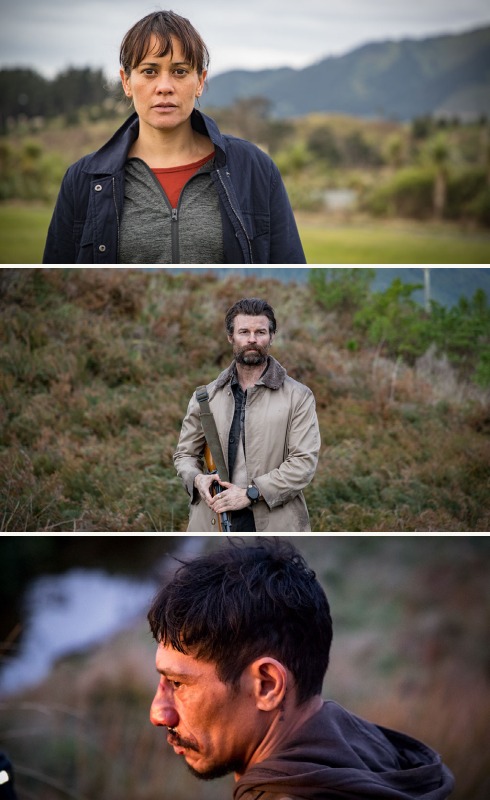 COMING HOME IN THE DARK, New Zealand, 2021. Starring Daniel Gillies, Erik Thomson, Miriama McDowell, Matthias Luafutu. Directed by James Ashcroft. 91 minutes. Rated MA (Strong themes, violence and coarse language)
COMING HOME IN THE DARK, New Zealand, 2021. Starring Daniel Gillies, Erik Thomson, Miriama McDowell, Matthias Luafutu. Directed by James Ashcroft. 91 minutes. Rated MA (Strong themes, violence and coarse language)
The title indicates two important themes. The obvious one is the emphasis on the dark, this film being a long, literal, journey into night. The expectations of coming home, especially with the introduction to the family, would be to their own home. But it is not.
This is a terror film. Some have categorised it is horror but it is, more accurately, menacing and terrorising. And it is effective in portraying those terrors on the screen as well as eliciting terror and fear in the audience as it watches the characters and what befalls them. The film is effective in its creation of atmosphere, working on the conventions of the road movie, and, ultimately, raising significant issues for the audience to ponder.
The film was shot in areas around New Zealand's capital, Wellington. As it opens, we are in a car – an ordinary family going for an outing. Mother and father (Thomson and McDowell) and their relationship, boys squabbling in the back in the usual manner, stopping at the service station, passing through beautifully rugged countryside, ultimately arriving at the destination, going hiking, and enjoying a picnic on the riverside.
What could go wrong? The film is the answer to that question.
Unexpectedly, in this remote area, two strangers wander in, one bearded, somewhat sinister (a sometimes quietly fierce performance from Daniel Gillies), the other, Tubs, thin and silent, (Matthias Luafutu). The sinister Gillies introduces himself as Mandrake, a magician able to ring changes. Then some shock moments, so unexpected, dreadful, and the tone of the narrative changes.
Some commentators on the film remember A Clockwork Orange and the menacing and then violent intrusion of the thuggish Droogs. Others remember the story filmed twice, a story of home invasion and a family menaced, The Desperate Hours (1955 and 1990). This is sustained menace to the family.
As the night advances and Mandrake and Tubs drive away with their captives, there are confrontations, attempted escapes, visit to the service station again, the husband using his wits, brutality towards his wife, what might be expected in this kind of threatening journey.
However, what is important in the screenplay and the portrayal of characters is Mandrake’s motivation in pursuing the husband. As they drive, there are interrogations, revelations about the husband’s past as a teacher – opening up more about the 1980s, a home for boys, the dreadful treatment that they received, the building of resentment, the growing angers as they grew older, vengeance preoccupying their attitude towards life.
As the tension grows, Mandrake decides to drive to the site of the home itself, eliciting some flashbacks, the audience understanding more and more what has happened in the past, and the challenge to the husband, a young man in those days on the staff of the institution, witnessing the sadistic behaviour of the teachers, challenged as to what he might have done, should have done?
Which is what is left for the audience to react to, to think about – and, in these days of the aftermath of Royal Commissions, investigations into physical and sexual abuse, Coming Home in the Dark is a film that dramatises what many of the abused have felt, feel, have survived but need some kind of acknowledgement, compensation, healing.